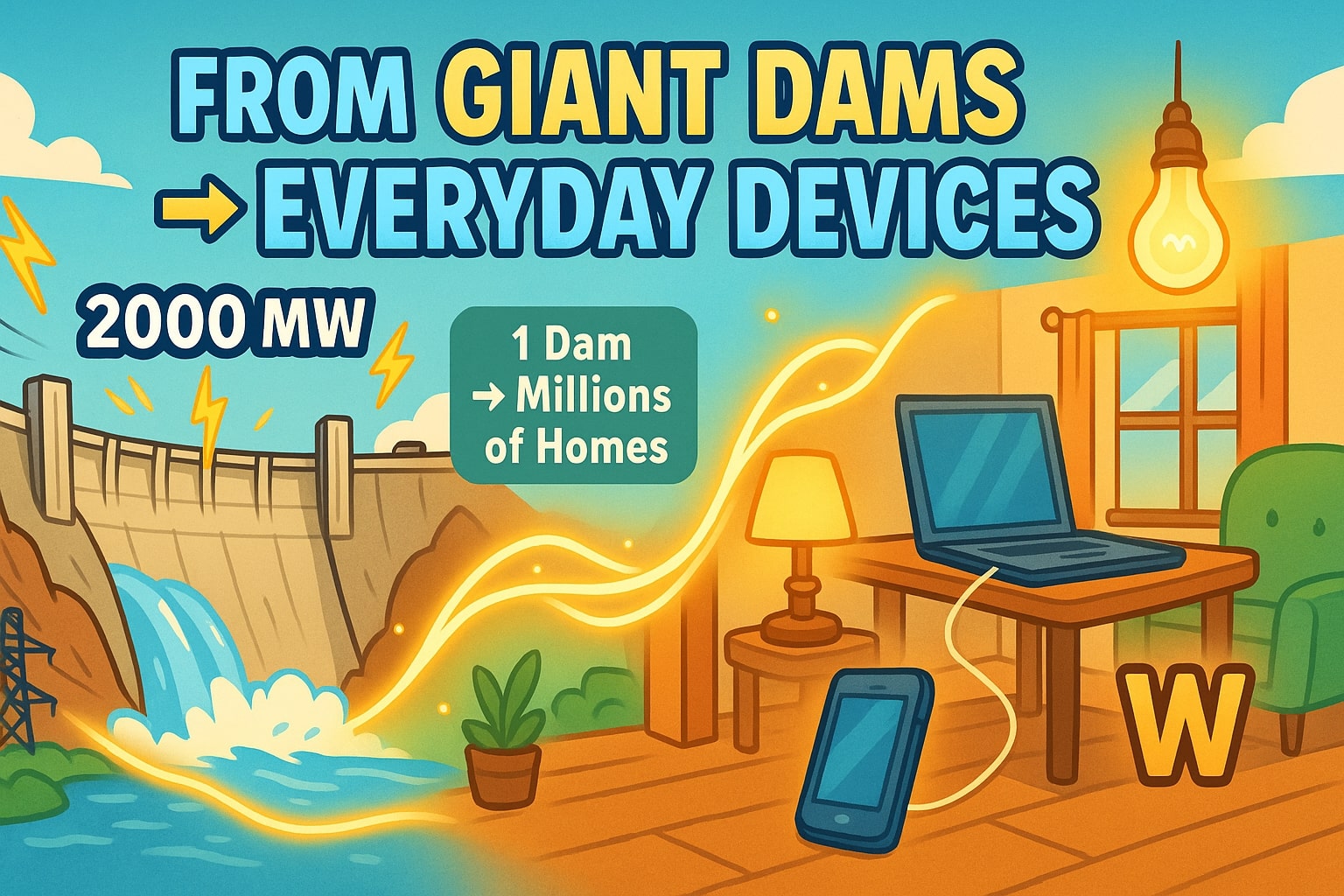megawatt to watt (MW to W) - How to convert MW to W
Converting megawatt to watt highlights the difference between massive power plants and the smaller-scale devices we use daily. With just one step, you can translate huge energy values into understandable numbers.

What is a Megawatt?
The megawatt (MW) is a unit of power equal to 1 000 000 W. It is often used to describe the capacity of power plants, wind farms, or hydroelectric dams. For example, a modern nuclear reactor may generate more than 1000 MW, enough to supply electricity to an entire region.
What is a Watt?
The watt (W) is the base SI unit of power, named after James Watt. One watt equals one joule of energy per second. It’s used everywhere, from the rating on your light bulb to the power drawn by your phone charger. Watts bring the concept of energy down to a human scale.
Formula: Convert MW to W
The relationship is straightforward:
1 MW = 1 000 000 W
Example:
If a hydropower station produces 15 MW, then:
15 × 1 000 000 = 15 000 000 W
This means the dam generates the equivalent of 15 million watts, showing how one large number can be broken into relatable units.
For instant calculations, you can rely on our Conversion Tools, which handle megawatts, watts, and many other power units.
Did you know?
-
The Three Gorges Dam in China has an installed capacity of over 22 000 MW, equal to 22 000 000 000 W.
-
The human brain, while at rest, consumes about 20 W, a tiny figure compared to industrial megawatts.
-
In science fiction, futuristic machines are often powered by exaggerated figures—Star Trek’s warp engines were described in megawatts and gigawatts.
-
A typical LED bulb uses around 10 W, meaning it would take 100 million bulbs to consume the same energy as a 1 MW generator.
From Giant Dams to Everyday Devices
One of the most striking examples of megawatt power is the Hoover Dam, built during the Great Depression in the 1930s. With a capacity of over 2000 MW, it symbolized American progress and provided electricity to millions of people. Converted into watts, that’s 2 000 000 000 W.
But the story becomes fascinating when you compare that output to household use. While the dam produces billions of watts, the average household light bulb consumes just a few dozen watts. This contrast illustrates how megawatts keep entire cities alive, while watts make daily comfort possible—lighting homes, charging devices, or running a laptop.
The Hoover Dam not only powered industries and communities but also reshaped how the world understood electricity at scale. It remains a symbol of how large-scale projects (MW) connect directly to small-scale needs (W).

From Massive Grids to Everyday Living
Accurate conversions are essential for engineers, students, and energy planners alike. Alongside megawatt to watt, our Power Converter supports all scales, from milliwatts to gigawatts. Combined with the all-in-one Conversion Tools, you can quickly scale values for any application.
The conversion from megawatt to watt (MW to W) is as simple as multiplying by 1 000 000, but its meaning is powerful. Megawatts describe the infrastructure that powers nations, while watts represent the devices that power daily life. With Jetcalculator, you can bridge the gap between these worlds and make energy calculations clear, accurate, and useful.

